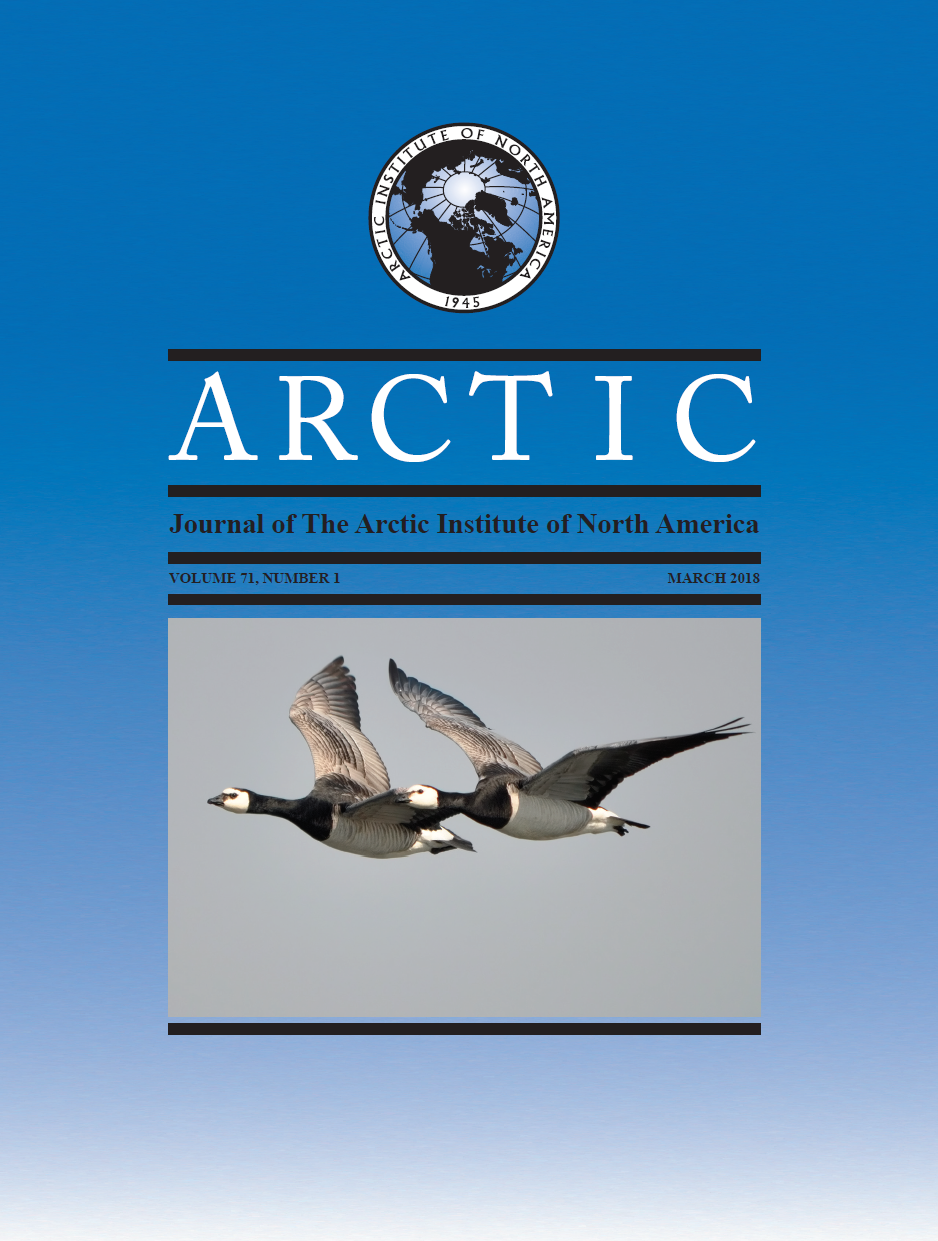Temporal and Spatial Patterns of Ship Traffic in the Canadian Arctic from 1990 to 2015
DOI:
https://doi.org/10.14430/arctic4698Keywords:
Arctic, marine transportation, shipping trends, climate change, Canada, GIS, Northwest PassageAbstract
The limited availability of consistent, longitudinal data sources for marine traffic in Arctic Canada has presented significant challenges for researchers, policy makers, and planners. Temporally and spatially accurate shipping data that reveal historical and current traffic trends are vital to plan safe shipping corridors, develop infrastructure, plan and manage protected areas, and understand the potential environmental and cultural impacts of change, as well as for sovereignty and safety considerations. This study uses a recently developed geospatial database of ship traffic to provide the first synthesized overview of the spatial and temporal variability of different vessel types in Arctic Canada during the 26-year period from 1990 to 2015. This examination shows that, overall, the distance traveled by ships in Arctic Canada nearly tripled (from 364 179 km in 1990 to 918 266 km in 2015), that the largest proportion of ship traffic in the region is from general cargo vessels and government icebreakers (including research ships), and that the fastest growing vessel type by far is pleasure craft (private yachts). Spatial shifts in vessel activity over the last quarter century have favoured areas with active mine sites, as well as the southern route of the Northwest Passage. As a result, some communities, including Baker Lake, Chesterfield Inlet, Pond Inlet, and Cambridge Bay, are experiencing greater increases in ship traffic.
Downloads
Additional Files
Published
Issue
Section
License
Copyright (c) 2018 ARCTIC

This work is licensed under a Creative Commons Attribution 4.0 International License.


